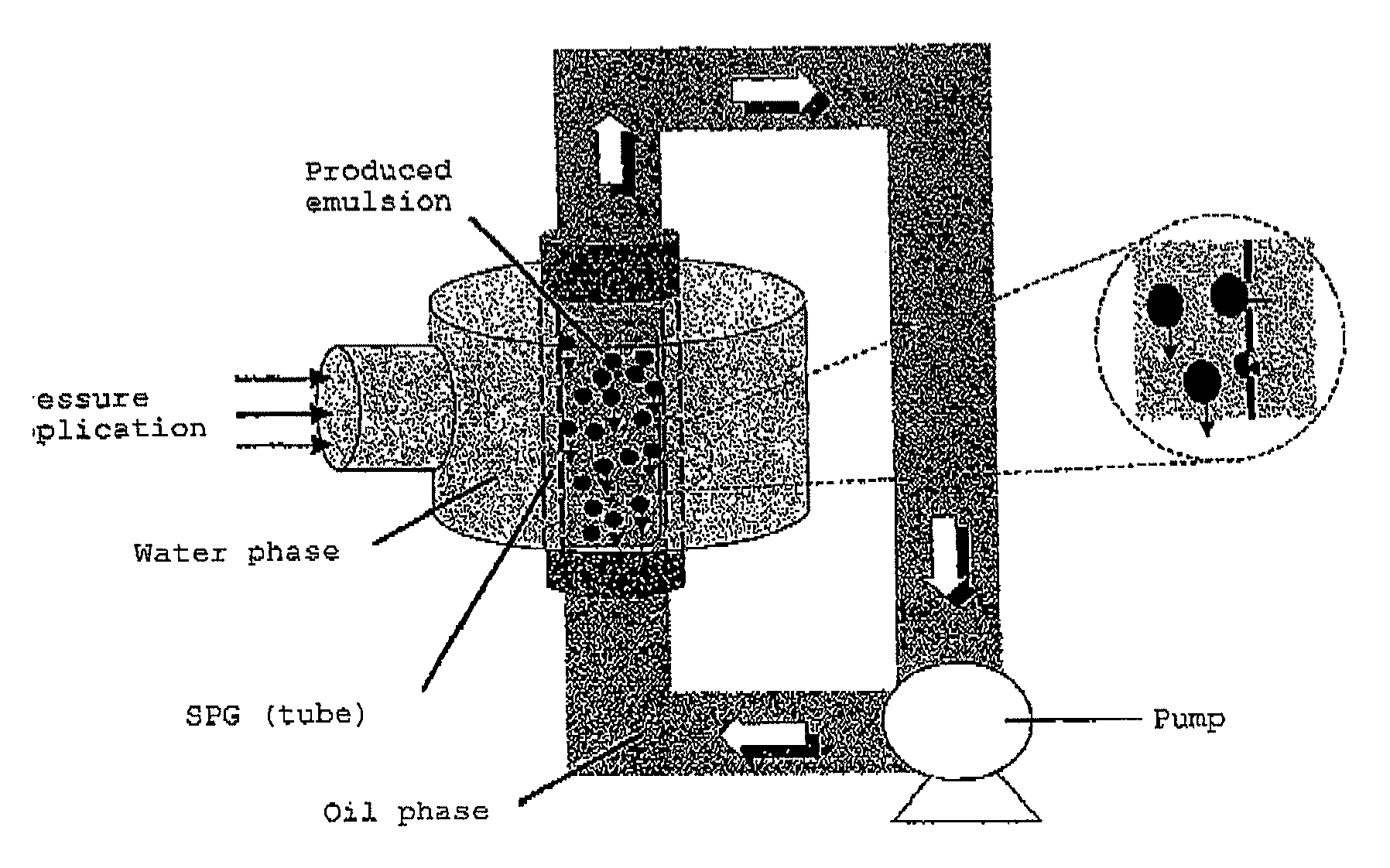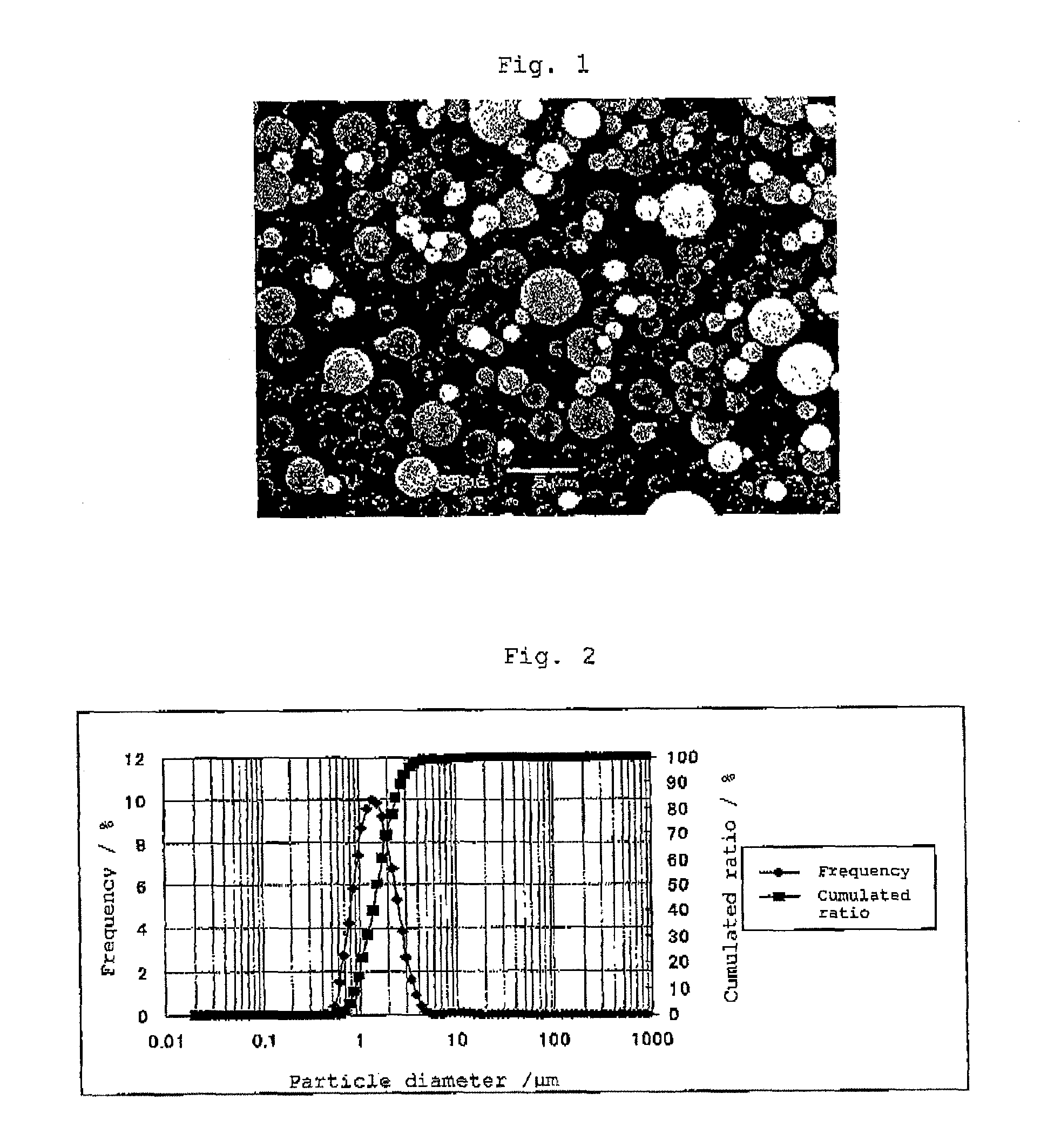Positive electrode active material powder and positive electrode active material
- Summary
- Abstract
- Description
- Claims
- Application Information
AI Technical Summary
Benefits of technology
Problems solved by technology
Method used
Image
Examples
example 1
[0074]An aqueous solution obtained by dissolving 0.06 mol of nickel acetate and 0.06 mol of manganese acetate in 250 ml was used as a water phase, 600 ml of cyclohexane was used as an oil phase and fine pores of an SPG with an average fine pore diameter of 1 μm as fine pores were used and the water phase was passed through the fine pores and brought into contact with the oil phase to produce an emulsion. Specifically, as the SPG, a tube with an outer diameter of 1 cm, an inner diameter of 0.8 cm, a length of 10 cm, and a thickness of 1 mm was used and the water phase was set in the outside of the tube and the oil phase was set in the inside of the tube and the water phase was extruded to the inside of the tube through the SPG and brought into contact with the oil phase to produce an emulsion. At that time, both ends of the tube were bonded to a stainless steel pipe to circulate the oil phase by a pump (see FIG. 7). Further, extrusion of the water phase was carried out by applying pr...
example 2
[0076]A lithium secondary battery was produced as described above using the positive electrode active material 1. With respect to the lithium secondary battery, charging / discharging evaluation was carried out in conditions of voltage range of 4.3 to 3.0 V and 0.2 C rate and as a result, the discharge capacity at the initial time was 120 mAh / g (result is shown in FIG. 8).
example 3
[0077]After 20 g of the powder for a positive electrode active material 1 was dispersed in 600 mL of ethanol, washing and filtration were carried out, and the power was further dispersed in 1 L of pure water and washing and filtration were carried out. The cake obtained by the filtration was vacuum dried at 60° C. for 8 hours to obtain a powder for a positive electrode active material 2. The particle size distribution of the powder for a positive electrode active material 2 was the same as that of the powder for a positive electrode active material 1 and D50 was 1.5 μm and 95% by volume or more of particles existed in the range of 0.45 μm or larger and 4.5 μm or smaller and 95% by volume or more of particles existed in the range of 0.6 μm or larger and 6.0 μm or smaller. Further, the Na content in the powder for the positive electrode active material 2 was 0.8% by weight. A positive electrode active material 2 was obtained using the powder for a positive electrode active material in...
PUM
 Login to View More
Login to View More Abstract
Description
Claims
Application Information
 Login to View More
Login to View More - R&D Engineer
- R&D Manager
- IP Professional
- Industry Leading Data Capabilities
- Powerful AI technology
- Patent DNA Extraction
Browse by: Latest US Patents, China's latest patents, Technical Efficacy Thesaurus, Application Domain, Technology Topic, Popular Technical Reports.
© 2024 PatSnap. All rights reserved.Legal|Privacy policy|Modern Slavery Act Transparency Statement|Sitemap|About US| Contact US: help@patsnap.com










